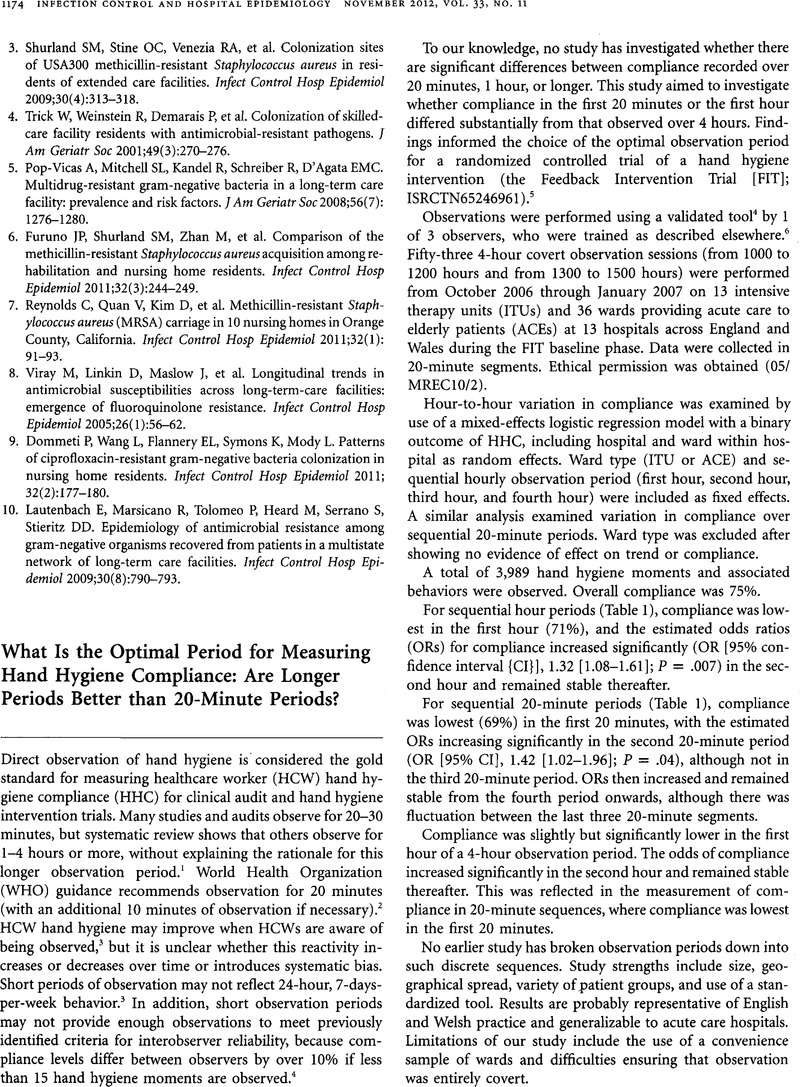Crossref Citations
This article has been cited by the following publications. This list is generated based on data provided by Crossref.
FitzGerald, G.
Moore, G.
and
Wilson, A.P.R.
2013.
Hand hygiene after touching a patient's surroundings: the opportunities most commonly missed.
Journal of Hospital Infection,
Vol. 84,
Issue. 1,
p.
27.
Linam, W. Matthew
Honeycutt, Michele D.
Gilliam, Craig H.
Wisdom, Christy M.
Bai, Shasha
and
Deshpande, Jayant K.
2016.
Successful development of a direct observation program to measure health care worker hand hygiene using multiple trained volunteers.
American Journal of Infection Control,
Vol. 44,
Issue. 5,
p.
544.
Kurtz, Sharon Lea
2017.
Measuring and accounting for the Hawthorne effect during a direct overt observational study of intensive care unit nurses.
American Journal of Infection Control,
Vol. 45,
Issue. 9,
p.
995.
Kurtz, Sharon Lea
2017.
Identification of low, high, and super gelers and barriers to hand hygiene among intensive care unit nurses.
American Journal of Infection Control,
Vol. 45,
Issue. 8,
p.
839.
Livorsi, Daniel J.
Goedken, Cassie Cunningham
Sauder, Michael
Vander Weg, Mark W.
Perencevich, Eli N.
and
Reisinger, Heather Schacht
2018.
Evaluation of Barriers to Audit-and-Feedback Programs That Used Direct Observation of Hand Hygiene Compliance.
JAMA Network Open,
Vol. 1,
Issue. 6,
p.
e183344.



